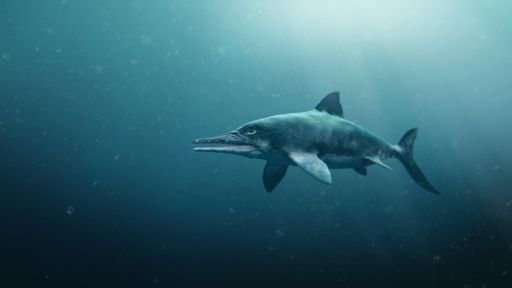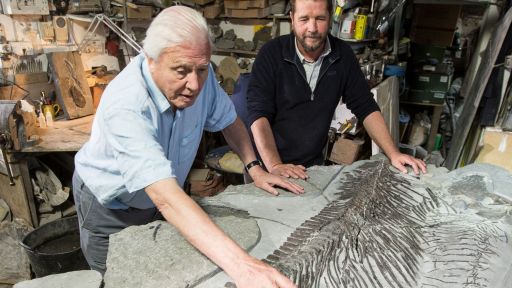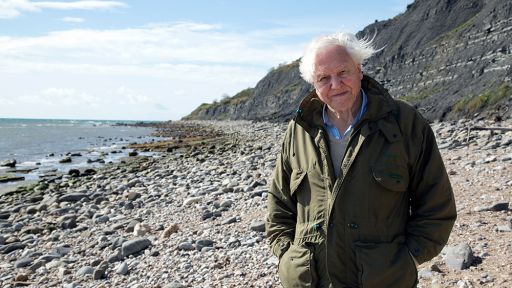With their giant jaws and razor-blade teeth, the Temnodontosaurus was one of the largest of the ichthyosaurs. This predator grew up to 33 feet long and had the largest eyes known of any animal. Fossils prove that this fierce sea dragon fed on smaller ichthyosaurs.
Features



To find out more, I've come to the Natural History Museum of Stuttgart in Germany.
Here, they have one of the most impressive and varied collections of ichthyosaurs in the world.
They came in all shapes and sizes but of all the ichthyosaurs that existed 200 million years ago, there was one which was particularly fearsome.
This is Temnodontosaurus, one of the biggest of the sea dragons so far discovered.
They grew up to 10 meters long and individual bones have been discovered which suggests that they could grow even bigger than that.
The remains of these terrifying sea monsters were discovered in a quarry just outside Stuttgart. These are the biggest complete temnodontosaurus fossils ever found.
This huge predator had the largest eye known of any animal, which would have given it extremely acute eyesight. Not only that, but the eye was surrounded by a ring of scutes - bony plates - to protect it from the water pressure at depth.
So with eyes the size of footballs, this monster was able to hunt at all depths of the Jurassic ocean.
It also had rows of sharp teeth that would have allowed it to rip apart almost anything.
These teeth are shaped like blades, well-suited for cutting into flesh.
And here's another specimen of temnodontosaurus that is proof positive that it really was a hunter.
Here is its stomach and inside its stomach you can see these tiny little circular bones, which are the backbones, the vertebrae of a baby ichthyosaur.
So we now know that temnodontosaurus could devour young ichthyosaurs, but would one have been capable of eating an adult ichthyosaur, like ours?
Fossils of temnodontosaurus have been found in other regions, including the Jurassic Coast.
So this monster could well be our prime suspect.
